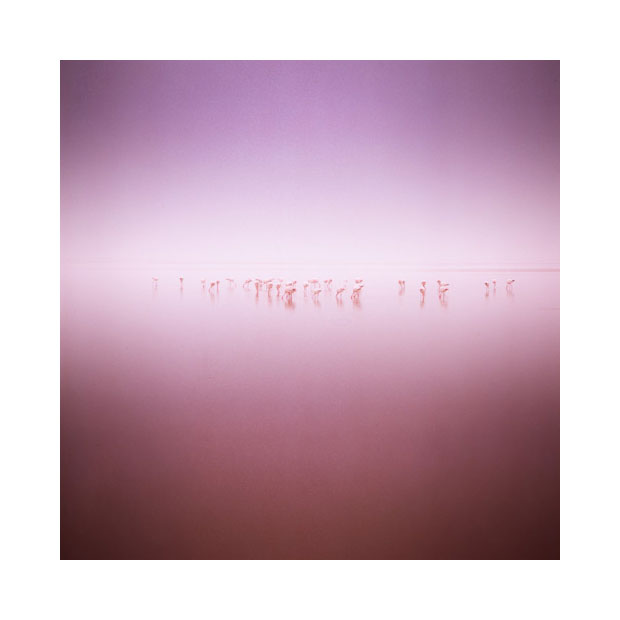Some images just come to us, like a gift.
Whilst visiting the Bolivian altiplano this summer, I felt I was given such a gift.
For the very first time, I saw Laguna Colorada shrouded in fog. This is not 'usual' circumstances for this location.
I love fog, because it can hide parts of the landscape and simplify the scene down to one or two elements. Laguna Colorada is surrounded by hills and far off volcanoes and as pleasing as these may be to include in the photograph, sometimes it's a real advantage to have backgrounds either partially veiled or completely hidden. Reducing down the landscape to this extent can bring 'focus' or 'presence' to the scene by presenting the viewer with just the main attraction.
Fog is also of great use in enabling objects within the scene to become contextually lost. With little else to give a reference point to what it is that you're actually seeing, your mind's-eye is fooled into believing that the subject is hovering in space. In the case of my visit to Laguna Colorada, I had far off groups of flamingo's isolated to such a degree, that they appeared to be almost suspended in mid-air. The illusion was complete when I chose not to include any parts of the foreground shore of the lake in the shot.
I shot this image with a Hasselblad 500 series camera (of which I own two). I used a 250mm lens, which despite being rather old and crusty, worked, even though I had not tested it before leaving the UK.
I've always been fascinated by telephoto 'scenes' often seeing them in my mind's-eye, but I've never really tried to shoot them in the past. I felt for a long while, that I had to master wide angles and standard field of view lenses before I could move on to telephotos. It's perhaps taken me about ten years to get to that point!
Those of you who follow what I've said in the past, or have spent time with me on my workshops, will know that I am great believer in using primes at the beginning of our photographic development, for a few reasons.
Firstly, by having only a hand-full of fixed focal lengths to use, we learn to visualise or 'see' compositions that we know will work well with the focal lengths that we have. For instance, if we only have two focal lengths to work with, say 24mm and 50mm, we tend to find that over time, we start to visualise scenes in either 24mm or 50mm. It's a great way to bring on composition learning/improvements because we have fewer decisions to make and we study what we're working with better as a result.
Secondly, we learn more easily about the properties of the focal lengths we're using. For example, wide angle lenses have more depth of field than higher focal lengths and wide angle lenses tend to push backgrounds further away. Whereas a standard field of view lens has less depth of field, and tends to bring backgrounds towards us.
Lastly, zooming with our feet allows us to engage with the landscape more and change the foreground subject matter (often quite drastically within a few foot steps), while allowing us to maintain the same background to foreground ratio. In other words, if we keep the focal length the same, we can keep the the background to the same proportions, whilst changing the foreground substantially.
I also feel that wide angles tend to invite us into the frame. We are encouraged to feel as if we could step from behind the camera and walk into the scene. Whereas I feel telephoto shots do not. Telephoto images are often of detached views, or at best, take on a voyeuristic point of view of the subject. We feel we are onlookers, because scenes take on a remoteness to them. This can be of great use in the right circumstances.
With the flamingo's in the lake now suspended in mid-air (because there were no contextual clues as to where they were) the use of a telephoto not only brought them closer toward me, but it also allowed me to enhance the illusion that they were floating, because as discussed, telephotos bring a sense of detachment to any scene they are used to capture.
Like someone said to me recently - 'it's like flamingo's in heaven'.

